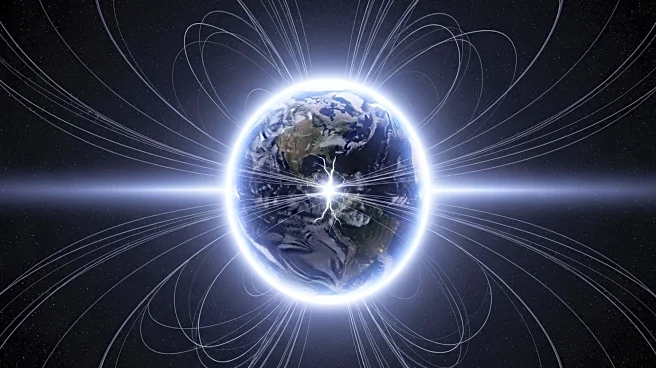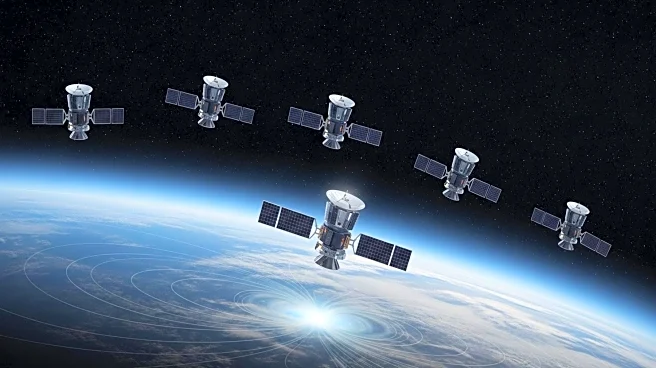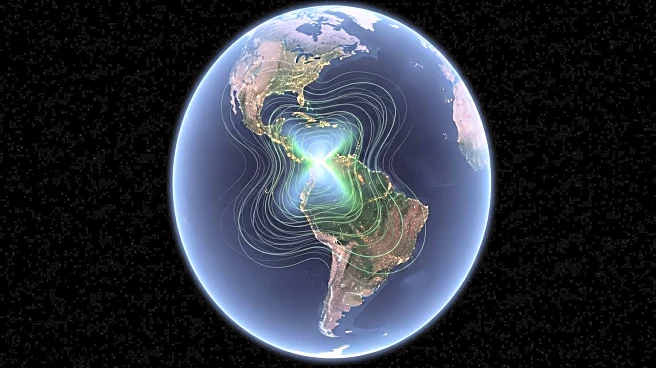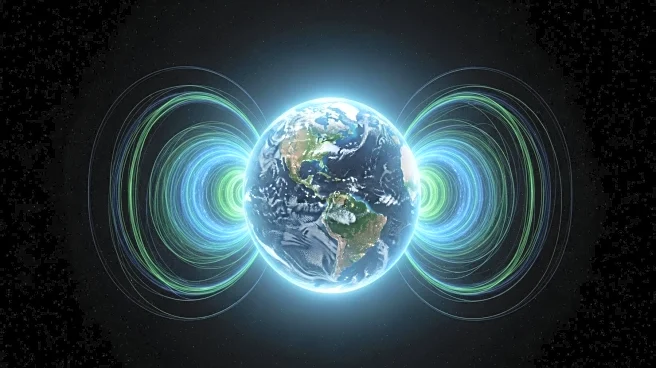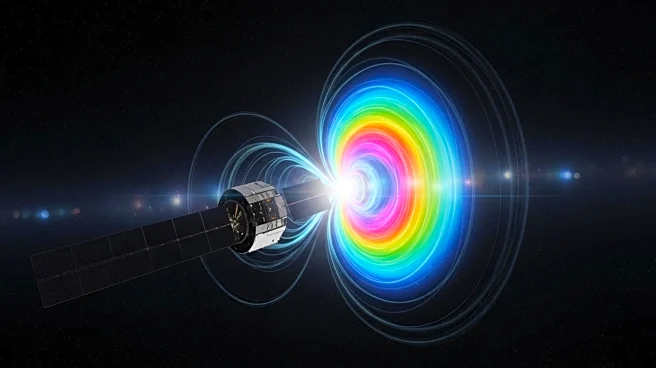What is the story about?
What's Happening?
The European Space Agency's Swarm satellite constellation has discovered that the South Atlantic Anomaly, a weak region in Earth's magnetic field, has expanded significantly since 2014. This anomaly poses risks to satellites due to increased radiation exposure, potentially leading to malfunctions. The Swarm mission's data reveals that the anomaly is changing differently towards Africa compared to South America, linked to reverse flux patches at the boundary between Earth's core and mantle.
Why It's Important?
The weakening of Earth's magnetic field in certain regions has implications for space safety, as satellites are exposed to higher radiation levels, risking hardware damage and blackouts. Understanding these changes is crucial for developing strategies to protect space assets. The anomaly's expansion could also affect navigation systems, as the magnetic field influences compass readings and GPS accuracy. This research contributes to our understanding of Earth's dynamic magnetism and its impact on technology and safety.
What's Next?
The Swarm mission continues to provide valuable data, with plans to extend its record beyond 2030. This ongoing research will help scientists monitor changes in Earth's magnetic field and develop models to predict future shifts. The insights gained could inform the design of more resilient satellite systems and improve navigation technologies. As the anomaly evolves, further studies will be needed to understand its long-term effects on space operations and Earth's environment.
AI Generated Content
Do you find this article useful?
